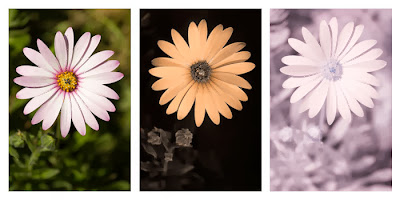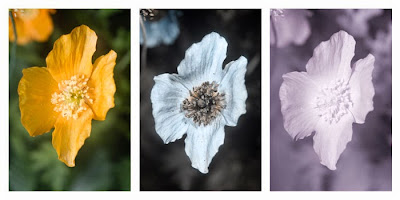Comparison of a Osteospermum ecklonis flower photographed in visible light (left), ultraviolet light (middle), and infrared light (right).
In visible light the flower head has white petals with a pink-purple tint, being more strongly coloured and darker towards the base of the petals. The centre is yellow with a darker purple section in the very middle.
In ultraviolet light the centre of the flower appears much darker. The base of the petals appears dark, the area that appears dark depends on the direction of the light on the petals.
In infrared light the petals are a single tone, the base of the petals is not dark. The centre of the flower has a similar tone to the petals, with the very centre being darker, similar to the flower's appearance in visible light but with a smaller difference in tone. the main difference visible in infrared is that all the foliage in the background is much brighter than it appears in visible light.


































